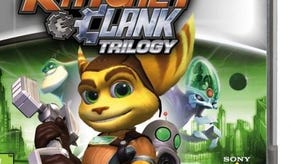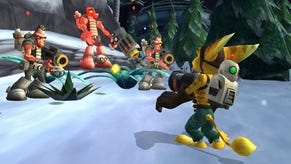The Ratchet & Clank Trilogy Review
Two's company.
Ratchet & Clank has always felt like a series out of time, to me. The duo debuted in 2002, just as the platform game genre was starting to lose momentum. Just as today's market is flooded with brown first-person shooters, so the console gaming landscape of the late 90s was dominated by anthropomorphic double-jumping heroes, smashing crates and navigating primary-coloured jungles in the hope of joining Mario and Sonic at the top table.
Don't forget, when Microsoft launched the Xbox, it didn't originally pin its hopes on Master Chief but on a vacuum-wielding time-sweeping cat called Blinx. Don't hear much about him these days, do we? Crash Bandicoot has been MIA since 2008 and Spyro has been folded into the Skylanders universe, where the gameplay owes more to the top-down melee mashing of Diablo than any of the classic 3D platformers. As for the likes of Croc, Gex, Bubsy, Kao and a hundred other wannabes, they're landfill: forgotten IP from a more cheerful age, rendered obsolete by an industry that has taken a turn for the bloodthirsty as graphical quality has skyrocketed.
So with another new game already in the works - their 11th - while so many of their turn-of-the-century peers moulder in the gutter, the endurance of Ratchet & Clank marks them out as true survivors, Darwinian exemplars in the video game ecospace. Pompous nonsense? Nope. And this HD compilation of their first three adventures helps to explain why.
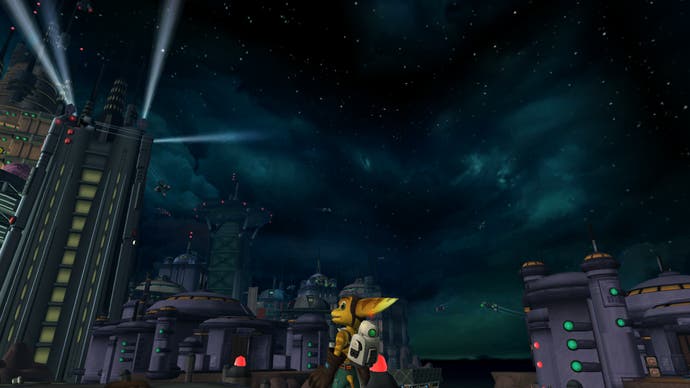
From the first Ratchet & Clank through to Ratchet & Clank 3 in 2004, Insomniac Games opened the humble platform game up to cross-pollination, allowing elements from third-person action games and role-playing games to creep into the genome. So while the original game is very clearly related to the 3D platform jumpers of old, by part two the dynamic duo were punctuating their exploration with joy rides in futuristic vehicles, and by part three they were wielding a dizzying array of weaponry that evolved and grew with repeated use.
All of this was achieved without losing sight of the innate pleasure of finding that secret area, or abandoning the primal joy of smashing the scenery and hearing the metallic tinkle of currency collected as a result. Put simply, Ratchet & Clank may be blowing out 10 candles on their cake this year, but Insomniac's forward-thinking design means that their adventures have barely aged a day.
That holds true for more than just the mechanisms underneath. The characters are still hugely appealing, their weird and wonderful sci-fi universe owing as much to the quick-witted satire of Futurama as it does to the old-fashioned storytelling charm of Pixar. You'll laugh often and smile even more, whether you're discovering them for the first time or revisiting them for a nostalgic fix
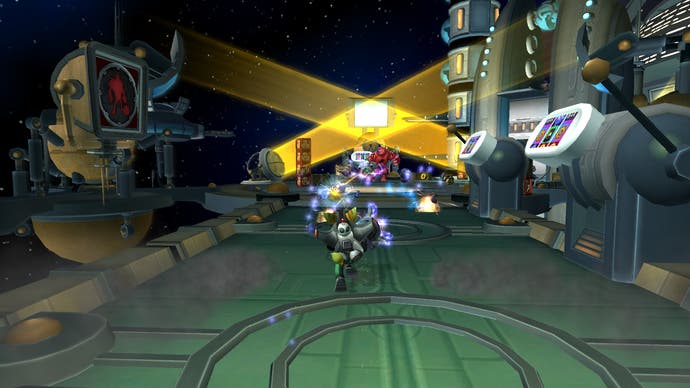
It's a good port, too. Idol Minds, the Sony studio best known for the Jackass-scented ragdoll game Pain, has done a respectful job of upping the resolution without blurring the appeal of the varied and colourful worlds of these games. The broad cartoon style of the series certainly helps, allowing the visuals to be smoothed out without impacting their feel. A reliable frame rate of 60 frames per second keeps things gliding along nicely - and you can opt to play in 3D, at the cost of that frame rate, if that's your thing. It's only when the game switches to pre-rendered cut-scenes that the edges go fuzzy, but that's no deal breaker, especially when Ratchet & Clank 3 now looks tantalisingly close to the duo's gorgeous PS3 titles in terms of sheer graphical wow factor.
Also augmented are the multiplayer modes of Ratchet & Clank 3, which now take full advantage of PSN rather than the basic Ethernet connection of the PlayStation 2. There are Trophies aplenty as well, as you'd expect.
Criticisms are hard to find and even harder to make stick. These are three games that go from good to great in chronological order, updated with care and affection and augmented with the online and social features we've come to expect from AAA console releases of the present day. The only thing that rankles slightly is how bare-bones these HD Collections can feel, serving up their retro delights in bland and perfunctory fashion.
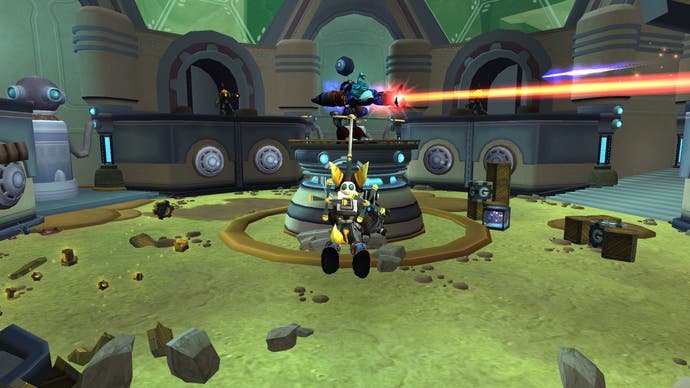
These are clearly games worth celebrating, so why not throw in some bonus material to show us what made them special? Perhaps a short documentary, charting the evolution of the series, or a look at the dozens of rejected character designs and gameplay ideas that never made it through production? Do games deserve that level of fan service? I'd like to think so, and such content makes much more sense in this sort of retrospective package than doled out in concept art galleries for collecting 100 meaningless doodads. As it is, you fire up the disc, choose your game from a static screen and have to quit if you want to sample anything else on the menu.
Across the three titles, repetition is also, inevitably, a problem - but, ultimately, compressing three years of design into one disc makes for an even stronger showcase for Insomniac's skill. The core may remain the same - run, jump, bash, shoot - but the details are etched more finely in each successive iteration. Unlike films, where series tend to reach their nadir with the third outing, the iterative nature of games means that the seeds of good ideas planted in a first game can flower into wonderful features several games later. It's only when the ideas run dry that games tend to run out of steam, repeating the formula to diminishing effect.
This compilation captures Ratchet & Clank at their innovative, genre-bending best. Great games at a great price make for a compelling if disappointingly businesslike package. If you have any fondness for the platforming genre, you owe it to yourself to sample this greatest hits compilation from arguably the last worthy faces to grace the genre.



